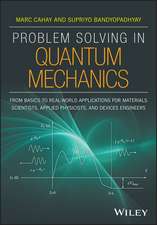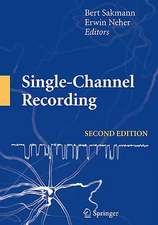Remote Sensing for the Control of Marine Pollution: Nato - Challenges of Modern Society, cartea 6
Autor Jean-Marie Massinen Limba Engleză Paperback – 2 oct 2011
Din seria Nato - Challenges of Modern Society
-
 Preț: 401.03 lei
Preț: 401.03 lei -
 Preț: 421.05 lei
Preț: 421.05 lei - 18%
 Preț: 1246.63 lei
Preț: 1246.63 lei -
 Preț: 388.34 lei
Preț: 388.34 lei - 5%
 Preț: 365.10 lei
Preț: 365.10 lei - 18%
 Preț: 1257.83 lei
Preț: 1257.83 lei - 5%
 Preț: 406.94 lei
Preț: 406.94 lei - 18%
 Preț: 1258.46 lei
Preț: 1258.46 lei -
 Preț: 418.32 lei
Preț: 418.32 lei - 5%
 Preț: 1418.48 lei
Preț: 1418.48 lei - 18%
 Preț: 953.20 lei
Preț: 953.20 lei -
 Preț: 379.68 lei
Preț: 379.68 lei -
 Preț: 418.76 lei
Preț: 418.76 lei - 18%
 Preț: 1249.14 lei
Preț: 1249.14 lei - 18%
 Preț: 957.75 lei
Preț: 957.75 lei -
 Preț: 434.34 lei
Preț: 434.34 lei -
 Preț: 398.15 lei
Preț: 398.15 lei -
 Preț: 424.15 lei
Preț: 424.15 lei -
 Preț: 430.69 lei
Preț: 430.69 lei -
 Preț: 430.47 lei
Preț: 430.47 lei -
 Preț: 391.99 lei
Preț: 391.99 lei
Preț: 405.66 lei
Nou
Puncte Express: 608
Preț estimativ în valută:
77.65€ • 84.37$ • 65.27£
77.65€ • 84.37$ • 65.27£
Carte tipărită la comandă
Livrare economică 21 aprilie-05 mai
Preluare comenzi: 021 569.72.76
Specificații
ISBN-13: 9781461297192
ISBN-10: 1461297192
Pagini: 484
Ilustrații: XII, 466 p. 190 illus.
Dimensiuni: 178 x 254 x 25 mm
Greutate: 0.83 kg
Ediția:1984
Editura: Springer Us
Colecția Springer
Seria Nato - Challenges of Modern Society
Locul publicării:New York, NY, United States
ISBN-10: 1461297192
Pagini: 484
Ilustrații: XII, 466 p. 190 illus.
Dimensiuni: 178 x 254 x 25 mm
Greutate: 0.83 kg
Ediția:1984
Editura: Springer Us
Colecția Springer
Seria Nato - Challenges of Modern Society
Locul publicării:New York, NY, United States
Public țintă
ResearchCuprins
Conclusions and Recommendations.- National Requirements.- The Remote Sensing Requirements for Oil Spills in Canada.- National Requirements for Airborne Maritime Surveillance.- National Requirements in the Federal Republic of Germany.- National Requirements in The Netherlands.- Requirements for the Remote Sensing of Oil on the Sea.- The United States Coast Guard’s Remote Aerial Sensing Program.- National Programs.- A Danish Airborne Oil Pollution Monitoring and Coastal Surveillance System: State of Art and Beyond.- The Operational Oil Pollution Surveillance System Being Used in France.- Research and Development Programs Relevant to the Remote Sensing of Oil Spills.- Remote Sensing Program for Oil Detection in The Netherlands.- Aerial Photography Interpreted for Contingency Planning, Spill Prevention, Compliance Monitoring and Spill Surveillance.- Aireye: A New Generation Oil Pollution Sensing System for the 80’s.- Airborne Oil Spill Surveillance Systems in Sweden.- Technical Results.- Optical Measurements of Crude Oil Samples under Simulated Natural Conditions.- Remote Sensing Analysis of Oil Pollutiorin Augusta Bay, Sicily, Italy.- High Contrast Imaging of an Oil Slick by Means of a Low Light Level Television.- Oil on the Sea: Application of Pattern Recognition Techniques to Thermal Infrared and SPOT Images.- An Analysis of Multispectral Line Scanner Imagery from Two Test Oil Spills.- Detection of Oil Slicks Using Real Aperture and Synthetic Aperture Imaging Radars-Experimental Results.- Oil Spill Detection Using a Multipurpose: Synthetic Aperture Radar.- Infrared Line Scanner and Side Looking Airborne Radar used for Remote Sensing of Oil on the Sea.- Evaluation of Infrared Line Scanner (IRLS) and Side Looking Airborne Radar (SLAR) over Controlled Oil Spills in theNorth Sea.- Observation of Two Test Oil Spills with a Microwave Scatterometer and a Synthetic Aperture Radar.- Measurements of the Distribution and Volume of Sea-Surface Oil Spills Using Multifrequency Microwave Radiometry.- Microwave Measurements over the North Sea.- Detection of Oil Pollutants Using Remote Sensing Techniques.- Optical Disgnostic of Oil Pollution.- Oil Spill Detection and Identification Using a Laser Fluorosensor.- The Dutch Experience with Remote Sensing of Oil Pollution.- Presentation of Maps Showing the Drift of the Oil from the Amoco Cadiz.- The Use of Satellites for Oil Spill Detection.- An Assessment of the Use of Space Technology in Monitoring Oil Spills and Ocean Pollution.- Capabilities of SEASAT Synthetic-Aperture Radar for Imaging the Ocean Surface.- A Large Scale Monitoring of the Hydrocarbon Pollution from the LANDSAT Satellite.- The First European Remote Sensing Satellite (ERS-1): Overall Description, Potential Applications and Users.- The International Standardized Oil Wake Experiments (ISOWAKE).- The Procedures International Standardized Oil Wake Experiment (ISOWAKE).- The Dutch Isowake Experiment of November 1980.- The French Isowake Experiment (Toulon, September, 1980).- Use of an Infrared Line Scanner and a Side Looking Airborne Radar to Detect Oil Discharges from Ships (ISOWAKE Experiments).- The Isowake-Med Experiment.- Contributors’ Addresses.- Participants.










